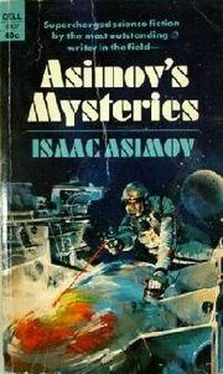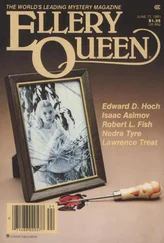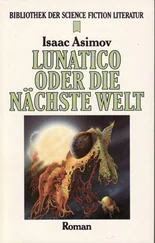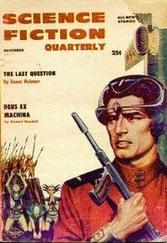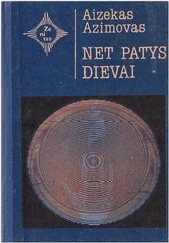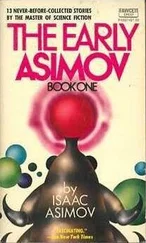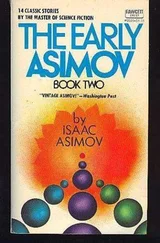Isaac Asimov - Asimov's Mysteries
Здесь есть возможность читать онлайн «Isaac Asimov - Asimov's Mysteries» весь текст электронной книги совершенно бесплатно (целиком полную версию без сокращений). В некоторых случаях можно слушать аудио, скачать через торрент в формате fb2 и присутствует краткое содержание. Год выпуска: 1986, ISBN: 1986, Издательство: Fawcett, Жанр: Фантастика и фэнтези, на английском языке. Описание произведения, (предисловие) а так же отзывы посетителей доступны на портале библиотеки ЛибКат.
- Название:Asimov's Mysteries
- Автор:
- Издательство:Fawcett
- Жанр:
- Год:1986
- ISBN:ISBN: 0-449-21075-8
- Рейтинг книги:4 / 5. Голосов: 1
-
Избранное:Добавить в избранное
- Отзывы:
-
Ваша оценка:
- 80
- 1
- 2
- 3
- 4
- 5
Asimov's Mysteries: краткое содержание, описание и аннотация
Предлагаем к чтению аннотацию, описание, краткое содержание или предисловие (зависит от того, что написал сам автор книги «Asimov's Mysteries»). Если вы не нашли необходимую информацию о книге — напишите в комментариях, мы постараемся отыскать её.
Asimov's Mysteries — читать онлайн бесплатно полную книгу (весь текст) целиком
Ниже представлен текст книги, разбитый по страницам. Система сохранения места последней прочитанной страницы, позволяет с удобством читать онлайн бесплатно книгу «Asimov's Mysteries», без необходимости каждый раз заново искать на чём Вы остановились. Поставьте закладку, и сможете в любой момент перейти на страницу, на которой закончили чтение.
Интервал:
Закладка:
Ashley shook his head solemnly from side to side, like a tolling bell. 'He was in panic, yes. And I suppose he lacked the presence of mind to try to reach Lunar Station. Only the need to run and escape possessed him. Even so this can't be gibberish. It hangs together too well. Every notation on the card can be made to make sense, and the whole can be made to hang together.'
'Where's the sense, then?' asked Davenport.
'You'll notice that there are seven items on the left side and two on the right. Consider the left-hand side first. The third one down looks like an equals sign. Does an equals sign mean anything to you, anything in particular?'
'An algebraic equation.'
That's general. Anything particular?'
'No.'
'Suppose you consider it as a pair of parallel lines?'
'Euclid's fifth postulate?' suggested Davenport, groping.
'Good! There is a crater called Euclides on the Moon-the Greek name of the mathematician we call Euclid.'
Davenport nodded. 'I see your drift. As for F/A, that's force divided by acceleration, the definition of mass by Newton's second law of motion--'
'Yes, and there is a crater called Newton on the Moon also.'
'Yes, but wait awhile, the lowermost item is the astronomic symbol for the planet Uranus, and there is certainly no crater-or any other lunar object, so far as I know-that is named Uranus.'
'You're right there. But Uranus was discovered by William Herschel, and the H that makes up part of the astronomic symbol is the initial of his name. As it happens, there is a crater named Herschel on the Moon-three of them, in fact, since one is named for Caroline Herschel, his sister, and another for John Herschel, his son.'
'Davenport thought awhile, then said, 'PC/2-Pressure times half the speed of light. I'm not familiar with that equation.'
'Try craters. Try P for Ptolemaeus and C for Copernicus.'
'And strike an average? Would that signifiy a spot exactly between Ptolemaeus and Copernicus?'
'I'm disappointed, Davenport,' said Ashley sardonically. 'I thought you knew your history of astronomy better than that. Ptolemy, or Ptolemaeus in Latin, presented a geocentric picture of the Solar System with the Earth at the center, while Copernicus presented a heliocentric one with the Sun at the center. One astronomer attempted a compromise, a picture halfway between that of Ptolemy and Copernicus--'
Tycho Brahe!' said Davenport.
'Right. And the crater Tycho is the most conspicuous feature on the Moon's surface.'
'AH right. Let's take the rest. The C-C is a common way of writing a common type of chemical bond, and I think there is a crater named Bond.'
'Yes, named for an American astronomer, W. C. Bond.'
The item on top, XY2. Hmm. XYY. An X and two Y's. Wait! Alfonso X. He was the royal astronomer in medieval Spain who was called Alfonso the Wise. X the Wise. XYY. The crater Alphonsus.'
'Very good. What's SU?' That stumps me, chief.'
'I'll tell you one theory. It stands for Soviet Union, the old name for the Russian Region. It was the Soviet Union that first mapped the other side of the Moon, and maybe it's a crater there. Tsiolkovsky, for instance. You see, then, the symbols on the left can each be interpreted as standing for a crater: Alphonsus, Tycho, Euclides, Newton, Tsiolkovsky, Bond, Herschel.'
What about the symbols on the right-hand side?'
That's perfectly transparent. The quartered circle is the astronomic symbol for the Earth. An arrow pointing to it indicates that Earth must be directly overhead.'
'Ah,' said Davenport, 'the Sinus Medii-the Middle Bay- over which the Earth is perpetuity at zenith. That's not a crater, so it's on the right-hand side, away from the other symbols.'
'All right,' said Ashley. Thenotations all make sense, or they can be made to make sense,so there's at least a good chance that this isn't gibberish and that it is trying to tell us something. But what?So far we'vegot seven craters and a non-crater mentioned, and what doesthat mean? Presum ably, the Device can only be in one place.'
'Well,' said Davenport heavily, 'a crater can be a huge place to search. Even if we assume he hugged the shadow to avoid Solar radiation, there can be dozens of miles to examine in each case. Suppose the arrow pointing to the symbol for the Earth defines the crater where he hid the Device, the place from which the Earth can be seen nearest the zenith.'
That's been thought of, old man. It cuts out one place and leaves us with seven pinpointed craters, the southernmost extremity of those north of the Lunar equator and the northernmost extremity of those south. But which of the seven?'
Davenport was frowning. So far, he hadn't thought of anything that hadn't already been thought of.
'Search them all,' he said brusquely.
Ashley crackled into brief laughter. 'In the weeks since this has all come up, we've done exactly that.'
'And what have you found?'
'Nothing. We haven't found a thing. We're still looking, though.'
'Obviously one of the symbols isn't interpreted correctly.'
'Obviously!'
'You said yourself there were three craters named Herschel. The symbol SU, if it means the Soviet Union and therefore the other side of the Moon, can stand for any crater on the other side: Lomonosov, Jules Verne, Joliot-Curie, any of them. For that matter, the symbol of the Earth might stand for the crater Atlas, since he is pictured as supporting the Earth in some versions of the myth. The arrow might stand for the Straight Wall.'
There's no argument there, Davenport. But even if we get the right interpretation for the right symbol, how do we recognize it from among all the wrong interpretations, or from among the right interpretations of the wrong symbols? Somehow there's got to be something that leaps up at us from this card and gives us so clear a piece of information that we can tell it at once as the real thing from among all the red herrings. We've all failed and we need a fresh mind, Davenport. What do you see here?'
'I'll tell you one thing we could do,' said Davenport reluctantly. 'We can consult someone I--Oh, my God!' He half-rose.
Ashley was all controlled excitement at once. 'What do you see?'
Davenport could feel his hand trembling. He hoped his lips weren't. He said. Tell me, have you checked on Jennings' past life?'
'Of course.'
'Where did he go to college?'
'Eastern University.'
A pang of joy shot through Davenport, but he held on. That was not enough. 'Did he take a course in extraterro-logy?'
'Of course, he did. That's routine for a geology major.'
'All right, then, don't you know who teaches extraterrology at Eastern University?' Ashley snapped his fingers. 'That oddball. What's-his-name -Wendell Urth.'
'Exactly, an oddball who is a brilliant man in his way. An oddball who's acted as a consultant for the
Bureau on several occasions and given perfect satisfaction every time. An oddball I was going to suggest we consult this time and then noticed that this card was telling us to do so. An arrow pointing to the symbol for the Earth. A rebus that couldn't mean more clearly "Go to Urth," written by a man who was once a student of Urth and would know him.'
Ashley stared at the card, 'By God, it's possible. But what could Urth tell us about the card that we can't see for ourselves?'
Davenport said, with polite patience, 'I suggest we ask him, sir.'
Ashley looked about curiously, half-wincing as he turned from one direction to another. He felt as though he had found himself in some arcane curiosity shop, darkened and dangerous, from which at any moment some demon might hurtle forth squealing.
The lighting was poor and the shadows many. The walls seemed distant, and dismally alive with book-films from floor to ceiling. There was a Galactic Lens in soft three-dimentionality in one corner andbehind it were star charts that could be made out A map of the Moon in another corner might, however, possibly be a map of Mars.
Читать дальшеИнтервал:
Закладка:
Похожие книги на «Asimov's Mysteries»
Представляем Вашему вниманию похожие книги на «Asimov's Mysteries» списком для выбора. Мы отобрали схожую по названию и смыслу литературу в надежде предоставить читателям больше вариантов отыскать новые, интересные, ещё непрочитанные произведения.
Обсуждение, отзывы о книге «Asimov's Mysteries» и просто собственные мнения читателей. Оставьте ваши комментарии, напишите, что Вы думаете о произведении, его смысле или главных героях. Укажите что конкретно понравилось, а что нет, и почему Вы так считаете.
